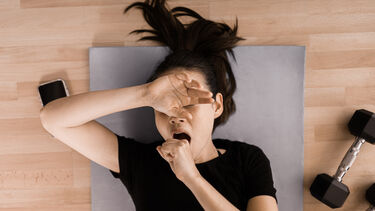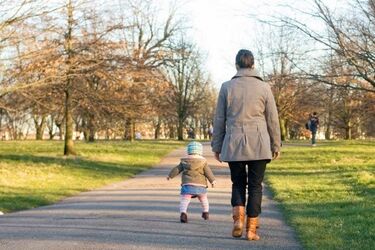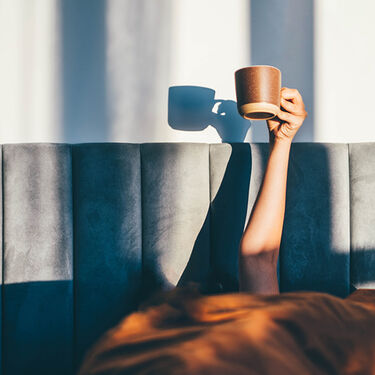
There’s another good reason to increase your daily movement: It may help you sleep better. But how do you exercise when you’re worn out from lack of shut-eye? We put this question and more to the experts.
It’s a dilemma sleep health specialist Dr Moira Junge has seen often. Tired women entering her clinic, desperate for help with sleep troubles and struggling to find the energy to exercise.
“It’s common and it’s a frustrating, vicious cycle for them,” says the psychologist and CEO of the Sleep Health Foundation. “It is so difficult when you’re not sleeping well to get enough exercise.”
What you might find surprising, however, is that sleep and exercise appear to benefit each other (if you’re able to get decent doses of both).
“We call this a bidirectional relationship,” says Dr Junge. In other words, good sleep can make it easier to exercise, and regular exercise appears to improve sleep, she explains. But how?
Dr Junge says that good-quality shut-eye restores the body and mind. It helps our muscles and tissues to heal, our energy to refuel, and is thought to support immune health, brain function and good emotional wellbeing, she says.
“As you can imagine, these are the things that make it easier to exercise both from an emotional and physical point of view.”
Scientists aren’t entirely sure. According to Emmanuel Stamatakis, Professor of Physical Activity and Population Health at the University of Sydney, there’s not a lot of research on the topic. But, he adds, what researchers have seen is that higher levels of moderate to vigorous physical activity (the kind that makes you huff and puff) “seem to likely prevent sleep disorders further down the line”.
It could be that physical activity helps to tire us out and relieve stress – both important for a decent night’s sleep, he says.
Keeping active also helps you maintain a healthy bodyweight, which is important for lowering the risk of obstructive sleep apnoea (a sleep disorder often linked to snoring), adds Dr Junge.
Just be mindful not to overdo your exercise, she says. “There are plenty of women I’ve seen who are super fit and they’ve had enormous difficulty with their sleep, in part because they were doing too much exercise.”
Experts used to warn against exercising before sleep, fearing it could make it difficult to nod off. “Now there’s enough evidence to say that unless you’re doing a massive marathon, don’t worry too much about the timing,” says Dr Junge.
What’s more important, she says, is exercising at a time that suits your body clock (if possible). Are you a morning type or do you prefer walks at sunset?
If high-intensity, late-night exercise is your preference, Dr Junge says you might need to allow for a two-hour wind-down before sleep, just to give your body time to cool off.
Now that you know physical activity is good for sleep, the big question is how do you motivate yourself to exercise when you’re exhausted from too little shut-eye? According to Professor Stamatakis, one simple solution could be shifting the way we think about physical activity. Don’t look at it as a chore or something structured that you must find time for, he says.
Many of us don’t have the time, and when you factor in things like the cost of the exercise, getting there, organising babysitters or carers and so on, it can be overwhelming, he adds.
Instead, Professor Stamatakis recommends you “try to incorporate short bursts of high-quality, high-intensity activity into your existing routine”. This ‘incidental’ movement could look something like:

These bursts of activity could be one to two minutes each, three to four times per day, says Professor Stamatakis, whose recent research shows short but intense bouts of movement are linked to lower risk of early death.
Ultimately, whatever your body can manage is a positive. “Just try to get out of breath and do it regularly several times a day, ideally every day, if possible,” he says.
To lessen that ‘too tired’ feeling and get out of that headspace, Dr Junge recommends exposing yourself to natural sunlight every morning. It’s like a reset button for your sleep-wake cycle, she says. You could try eating breakfast outdoors or facing a window, or even better – going for a walk.
“Part of the deal of you getting better sleep is that you understand the benefits of moving your body more and wearing yourself out a little,” she says.
Of course, if getting active is too difficult, or you’re experiencing troubling fatigue or a sleep issue that isn’t going away despite your trying, it’s important to speak to your doctor.
Various factors can affect our sleep and energy, including sleep disorders, stress, depression, thyroid issues and some medications, so extra support might be necessary. If you have a heart condition, it’s also worth checking in with your doctor before increasing your activity levels.

All reasonable steps have been taken to ensure the information created by Jean Hailes Foundation, and published on this website is accurate as at the time of its creation.
© 2024 Jean Hailes Foundation. All rights reserved. This publication may not be reproduced in whole or in part by any means without written permission of the copyright owner. Contact: licensing@jeanhailes.org.au